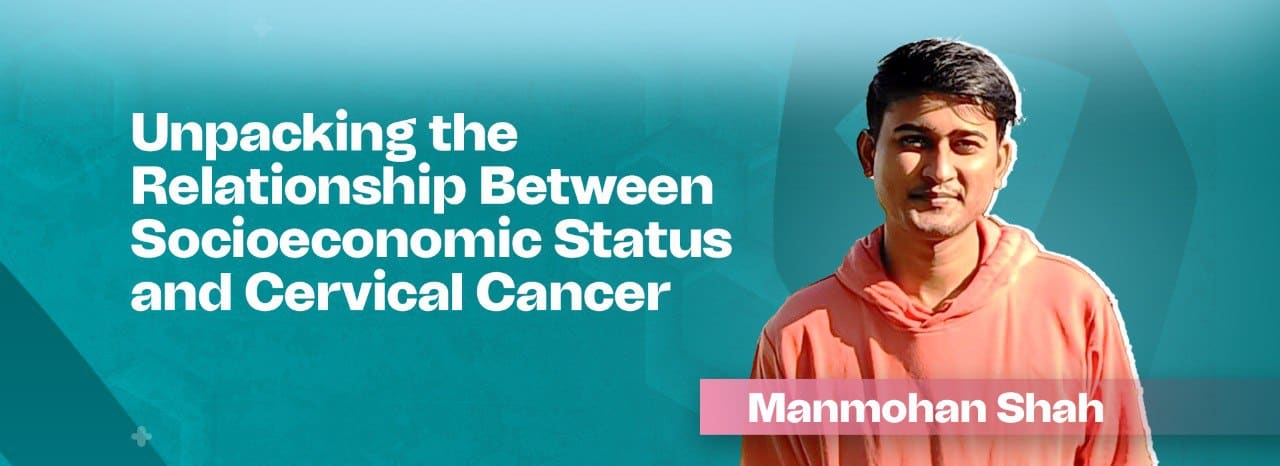
17 Jan Unpacking the Relationship Between Socioeconomic Status and Cervical Cancer
Cervical cancer is not just a global health issue; it’s a battle that real women are fighting every day. Despite all the strides we’ve made in medicine and healthcare awareness, let’s talk about how the money in your pocket can impact your life and the lives of women around the world. Join me in exploring the deeply human side of cervical cancer, and we’ll take a closer look at how this issue plays out in India.
Imagine this, it’s the fourth most common cancer among women worldwide, and every year, around 570,000 brave women face a new diagnosis, with nearly 311,000 losing their lives to this disease. But hold on, these are not just numbers; these are stories of real people with hopes, dreams, and families.
What’s heart-wrenching is that around 85% of cervical cancer cases and a staggering 87% of cervical cancer-related deaths happen in low and middle-income countries, as reported by the World Health Organization (WHO). This isn’t just about percentages; it’s about women who are struggling to access healthcare resources like screenings and vaccines, which can save their lives.
Now, picture this, a groundbreaking study published in The Lancet shows that women with limited financial means often can’t get those all-important regular screenings. In low-income countries, only 19% of women aged 30-49 have had a cervical cancer screening in the last three years, compared to 63% in high-income countries. This isn’t just a gap in numbers; it’s a gap in care, compassion, and, ultimately, in lives.
According to the American Cancer Society, the odds of surviving cervical cancer are nearly four times lower in low-income countries than in high-income ones. This is not just a statistic; it’s a tragedy unfolding, highlighting how economic disparities can lead to heart-wrenching consequences in terms of healthcare access and awareness.
In some parts of the world, people don’t have access to vital information about cervical cancer and its prevention. For instance, in some sub-Saharan African countries, only 20% of women are aware of the importance of regular screenings and HPV vaccinations. This isn’t just a lack of knowledge; it’s a lack of hope for a healthier future.
Now, let’s shift our focus to the situation in India, where we can feel the impact of economic disparities in the battle against cervical cancer.
In India, cervical cancer is the second most common cancer among women. To truly understand the connection between money and cervical cancer here, we must look through the lens of real people, each with a unique story.
Picture this, a study by the Indian Council of Medical Research (ICMR) reveals that the number of cervical cancer cases is twice as high in rural areas compared to urban cities. This isn’t just about numbers; it’s about real women who often can’t access healthcare resources and awareness programs, women who are fighting for their lives in the face of these challenges.
The National Family Health Survey (NFHS) tells us that only 54% of Indian women aged 15-49 have completed at least secondary education. This lack of education often leads to delayed diagnosis and limited awareness about cervical cancer. This isn’t just about schooling; it’s about the dreams and aspirations of these women, which are hindered by a lack of knowledge.
Despite efforts to provide vaccines and screenings, data from the Ministry of Health and Family Welfare reveals unequal access. It’s often the women in cities who have better access, while those in rural areas are left at a disadvantage. According to NFHS data, only 10% of women aged 15-49 have had a cervical cancer screening in the last three years. This isn’t just about numbers; it’s about unequal opportunities, unfulfilled dreams, and women who deserve better.
Research published in the Indian Journal of Medical and Paediatric Oncology tells us that many women in India can’t complete their cervical cancer treatment because of the financial burden. The high costs and lack of insurance make it nearly impossible for them to access proper care. This isn’t just about money; it’s about health and the very real human struggle to get the treatment they need to survive.
Now, let’s talk about the heroes and heroines who are making a difference in this fight:
The Indian government’s Mission Indradhanush is all about giving HPV vaccines to girls and women in underserved areas. This is a vital step in reducing cervical cancer cases, saving lives, and providing hope.
NGOs like CAPED India and the Indian Cancer Society are on the frontlines, conducting extensive awareness programs, especially in rural areas. They want to empower women with knowledge about cervical cancer prevention, the importance of regular screenings, and the available vaccination options. This is about giving people hope, inspiring change, and saving lives.
Initiatives like the Ayushman Bharat scheme aim to make healthcare more accessible and affordable. They want to ensure that women from economically disadvantaged backgrounds can access timely diagnosis and treatment. This is about real people getting the care they deserve, about dreams being fulfilled, and lives being saved.
In conclusion, cervical cancer and socioeconomic status are not just abstract concepts; they are deeply personal issues that affect real lives. The statistics we’ve discussed are not just numbers; they represent the struggles, hopes, and dreams of countless women. But there’s hope on the horizon. With vaccination programs, awareness campaigns, and better healthcare access, we’re working together to ensure that money doesn’t decide a woman’s health fate. It’s a collective responsibility, driven by compassion, to make sure that economic constraints don’t stand in the way of a brighter, healthier future for women everywhere.
About Author
Manmohan Shah is an intern with CAPED India and is currently pursuing MBA from SOIL Institute of Management.


